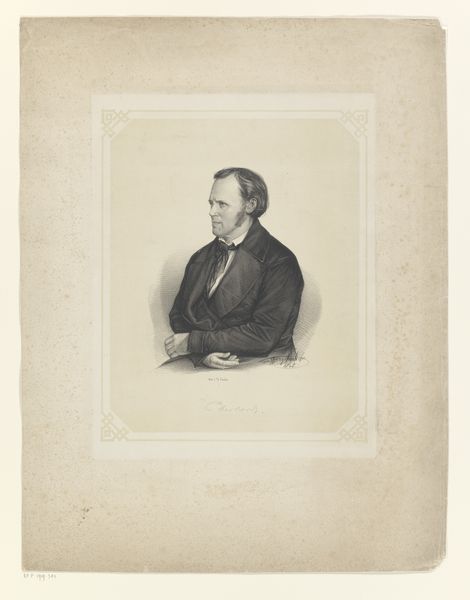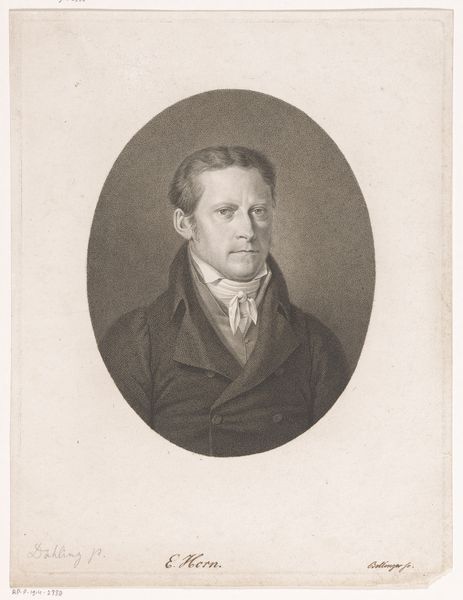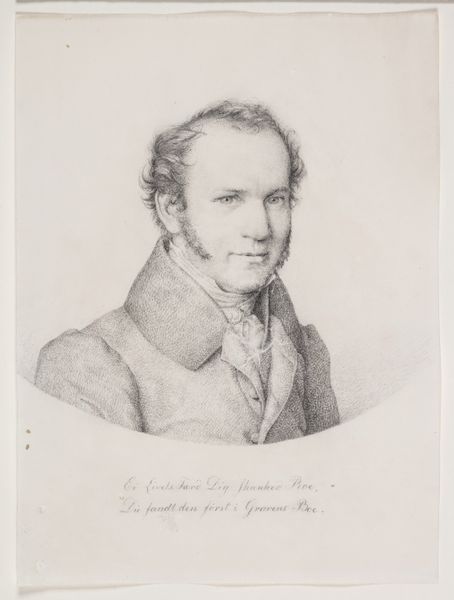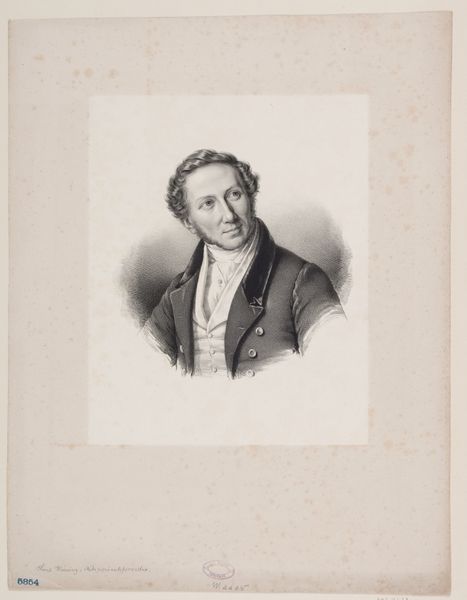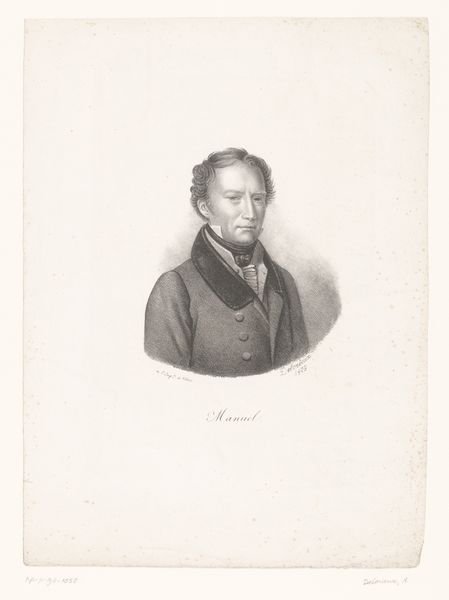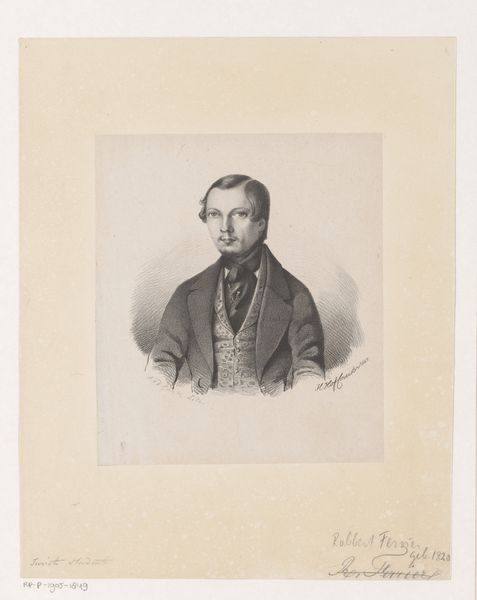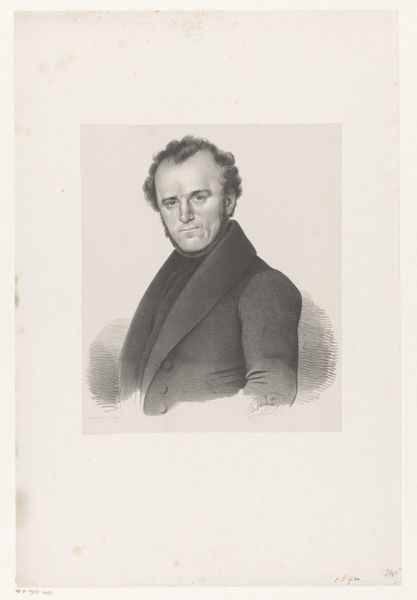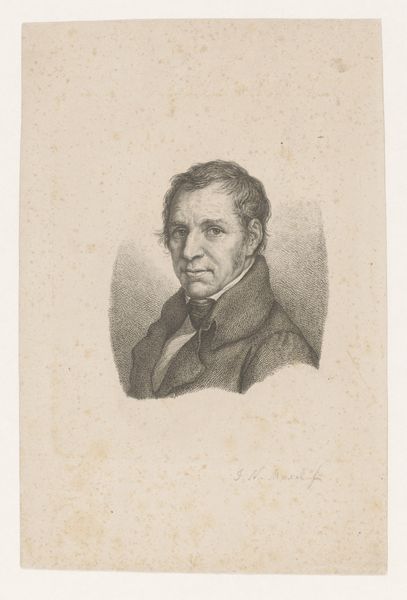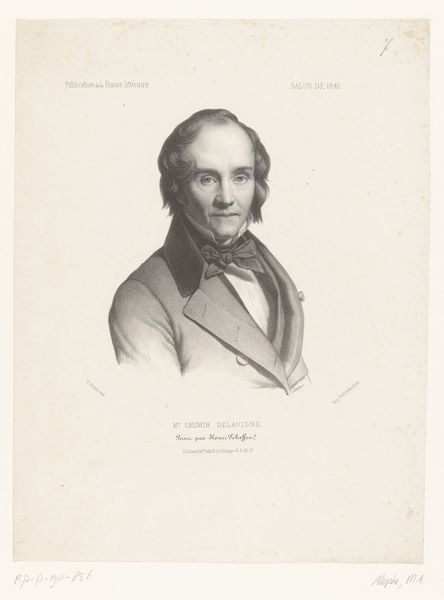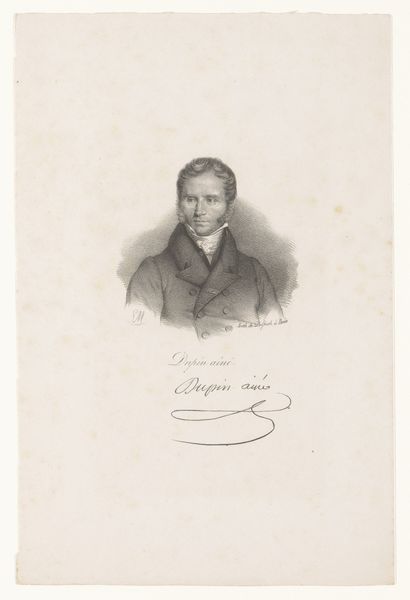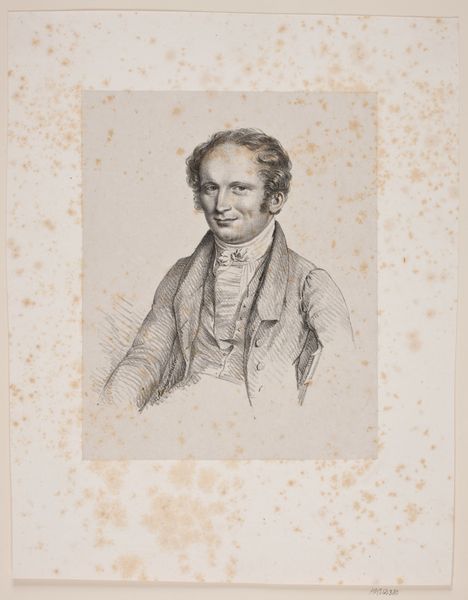
drawing, lithograph, print
#
portrait
#
drawing
#
lithograph
# print
#
pencil drawing
#
romanticism
#
portrait drawing
Dimensions: 363 mm (height) x 268 mm (width) (bladmaal)
Curator: Let’s examine this lithograph titled "Wilhelm Bendz," created around 1834. It's currently housed in the SMK, Statens Museum for Kunst. Editor: My initial reaction is one of subdued formality; there’s a distinct chill to his gaze, amplified by the stark lighting. He almost seems to be assessing us. Curator: Observe how the artist utilizes delicate lines and subtle shading to mold the contours of Bendz's face, a strategy effective in capturing the texture of skin and fabric. The composition is dominated by a range of gray tones, demonstrating careful modulation across the plane. Editor: That may be so, but such a stern portrayal makes me question the politics inherent in the construction of masculinity and power during the Romantic period. The cane, the dark jacket—aren't these deliberate markers of class and authority? It speaks to a certain exclusivity that needs interrogation. Curator: From a formal perspective, that dark jacket is crucial in anchoring the composition and provides the visual weight needed to balance the figure against the stark background. It facilitates a pyramidal structure with Bendz's head at its apex, concentrating attention and reinforcing his central role within the image. Editor: While your perspective highlights artistic strategies, let's also recognize how representations such as this were instrumental in upholding social hierarchies, specifically during a time of revolutionary turmoil throughout Europe. A portrait like this could serve to reinforce the sitter's elite status, a silent assertion of order amid socio-political change. Curator: I agree that artworks function within social contexts; nonetheless, its technical prowess, such as its balance of light and shadow and compositional strategy, should be recognized as important components. Look closely at the lithographic texture; it is incredibly rich, produced with exacting pressure. Editor: Right. To appreciate the complexity of artworks, one must weave art history with gender theory, with social science. How was access to portraiture shaped by class? And how does the legacy of artworks like this continue to affect identity today? Curator: Thinking strictly from a material angle and taking into account surface handling of lithography alongside pictorial arrangement yields considerable critical potential. Editor: But considering the political function of artwork is crucial. Understanding artworks entails exploring these intersecting levels of significance, especially its cultural and social implications.
Comments
No comments
Be the first to comment and join the conversation on the ultimate creative platform.
